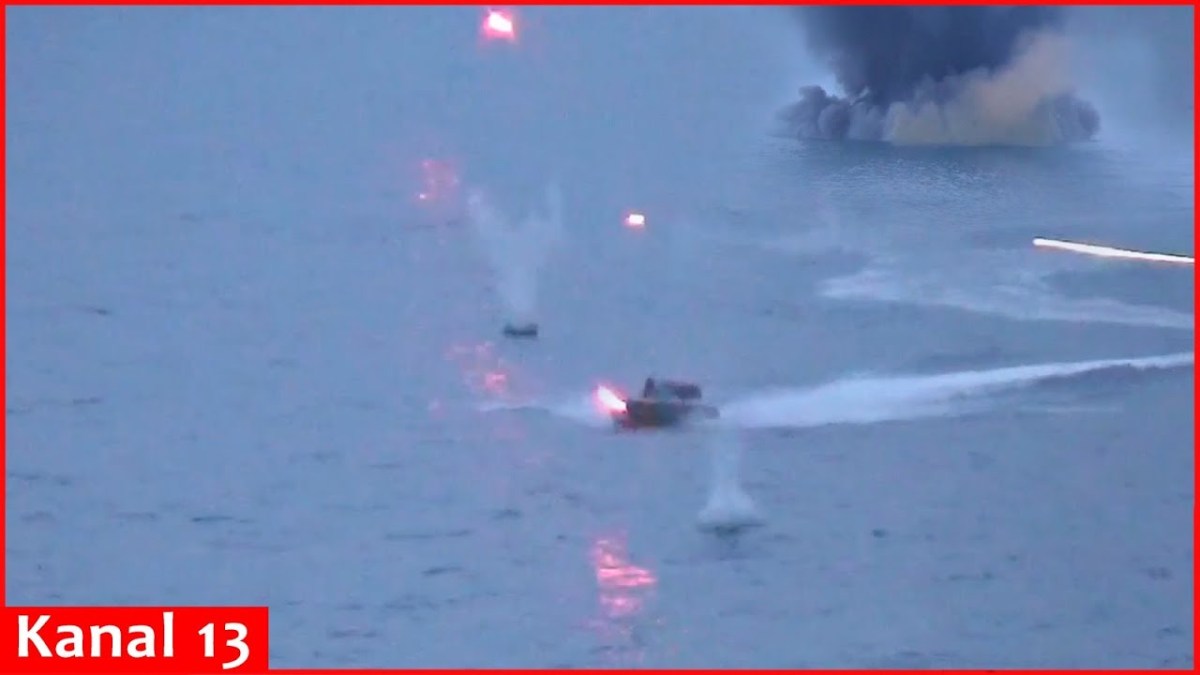Global Courant 2023-05-26 04:19:30
On May 24 a Ukrainian unmanned naval drone, filled with explosives, on its way to the Russian intelligence ship Ivan Khurs. That ship was guarding the Turkstream pipeline. The Russians fired at the drone and it exploded dramatically. The Russians say there were two other drones, which they claim destroyed the warship.
Pro-Ukrainian sources say the Ivan Khurs was damaged and is returning to port. There is a video claiming it came from one of the drones that hit the ship, but it is unconfirmed and could be fake. The only place this video could have come from would have been Ukrainian drone operators, but it didn’t come from any known source.
It is believed that this attack was intended to remove the Russian protective cap from the pipeline so that Ukraine could blow up the Turkstream pipeline unimpeded. According to the author, there would be no other reason to launch such an attack.
Design of the Ukrainian Navy Dronel. Image: HI Hutton (www.hisutton.com)
There are some disturbing facts about this operation.
The first is that the Ukrainians were preparing for the Turkstream pipeline and had to take out the Russian ship to guard it. Turkstream moves natural gas with an annual capacity of 31.5 billion cubic meters and consists of two 930-kilometer offshore lines and two separate onshore lines 142 kilometers (88.2 mi) and 70 kilometers long.
One of the buyers of Russian gas from this pipeline is Hungary. It would be a serious blow to Hungary if Turkstream were to be destroyed, and that could lead to upheaval in that country’s government. Hungary, under Viktor Orbán, is considered pro-Russian by Washington.
The Russian intelligence-gathering ship, the Ivan Khurs, is shown in 2021 passing through the Istanbul Strait. Photo: Wikipedia
If you think this is a bit like the case of the Nordstream pipeline, you wouldn’t be wrong. The difference is that this was intended as a political attack on Turkey and Hungary – not to sell US LNG to them, as was the case with Germany.
The Ivan Khurs is equipped with specialized sensors and communication equipment. If it detected a threat to the pipeline, it would launch Russian airstrikes against the intruder.
The Ukrainians carried out this operation in the Bosphorus, about 130 kilometers from the Turkish mainland. It is fair to say that this attack was not just aimed at the Russians, but was the first part of an attack against a NATO ally, Turkey and other gas consumers, especially Hungary – also a NATO ally.
The great distance to Ukraine suggests that Ukraine would have needed real-time intelligence to locate and target the Russian ship.
Here comes the disturbing part. Reportedly there was a US RQ-4 remotely piloted surveillance aircraft in the vicinity of this incident. The RQ-4 could have provided real-time targeting information and also passed the same information to the Ukrainian naval unmanned drone. While there is no hard evidence that the RQ-4 played a role, how else could Ukraine have carried out this operation?
Global Hawk first flight from Palmdale, California, to Edwards Air Force Base. Photo: Wikipedia / Bobbi Zapka.
Ukraine does not have long-range surveillance capabilities and is dependent on US intelligence services for this. In addition, it is common knowledge that the US and/or US allies have systematically provided targeted information to the Ukrainians. Two plus two add up to four unless there is another explanation.
The Russians are not above shooting down US drones, but they have only done so over the Black Sea where the US drones have threatened the security of Crimea or other critical areas where Russian troops are. If the RQ-4 actually played a part in preparing this pipeline attack, the Russians could change their attitude and threaten the security of the Black Sea and Bosphorus, or even beyond.
Just as the Nordstream operation took a huge risk, we now have another one that may be even more serious. While the Germans were threatened and intimidated by the United States and kept quiet about who did Nordstream, the Turks are different. Recep Tayyip Erdoğan, the Turkish president (now facing a second round), can play hard and tough.
Such provocations are dangerous and risky.
Stephen Bryen is a senior fellow at the Center for Security Policy and the Yorktown Institute. This article was originally published about his substack, weapons and strategy. Global Courant republishes it with permission.
Similar:
Loading…








